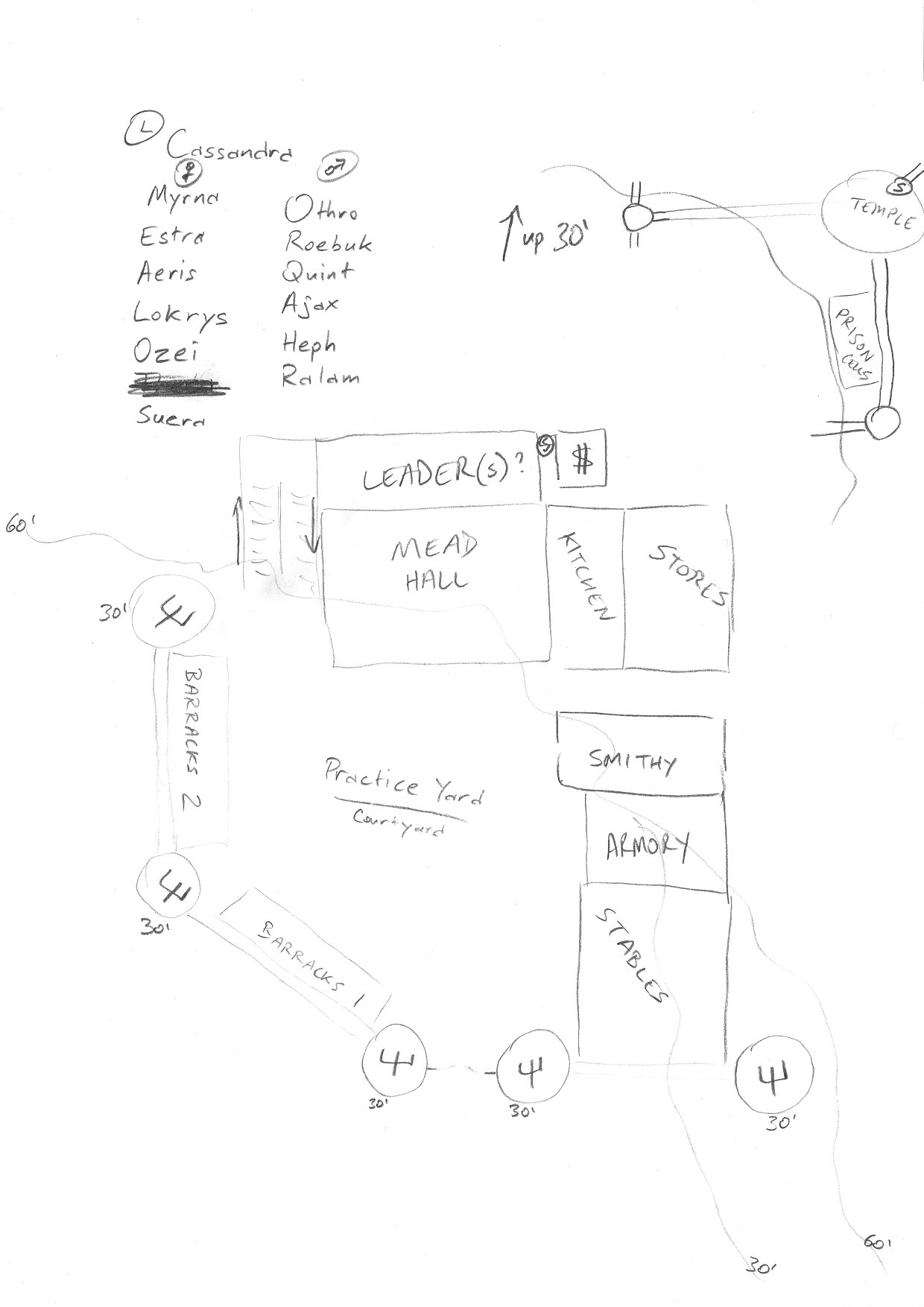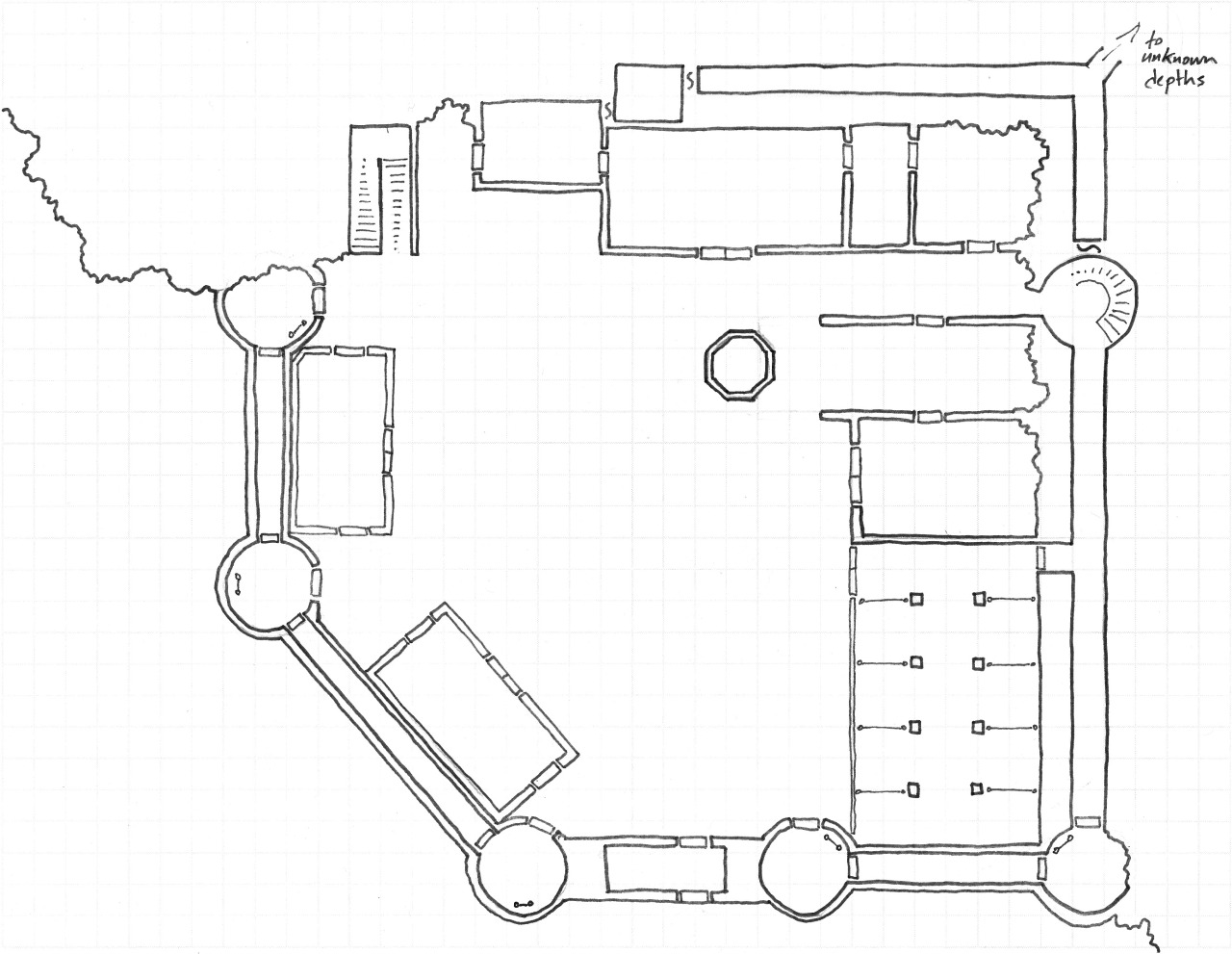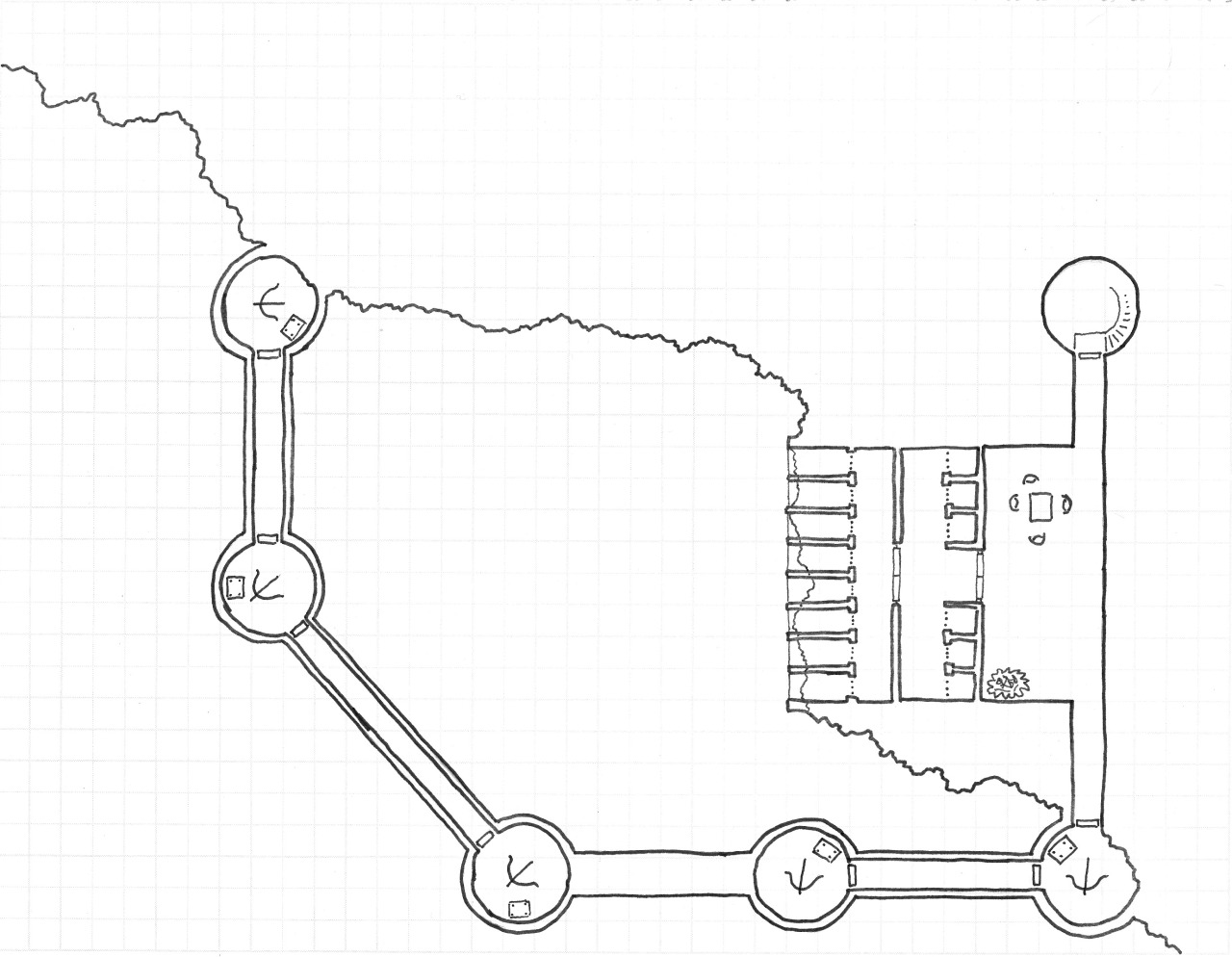I've
alluded before to how I once made the same dwarf in all four versions of AD&D. This is basically a reproduced transcript of that:
I started with
1st edition because I knew it was the most random, and ended up making a dwarf fighter. Each edition afterwards was simply an attempt to recreate the character from the previous edition, using the rules and character creation methods of the later editions. Here are the stats, straight up,
along with some notes I added for explanation.
Mitch the dwarven fighter!
1st edition
the Player's Handbook does not give any specifications on how to roll up a character, it just says The range of these abilities is between 3 and 18."
so I'm just using the classic method of rolling 3d6 and putting them in the abilities as I roll them. Rolled 15, 11, 5, 8, 11, 8, the stats after racial modifiers are in the order the book ascribes to them.
Strength 15 = weight allowance +200, Open Doors 1-2 on d6, Bend Bars/Lift Gates 7%
Intelligence 11
Wisdom 5 = magical attack -1
Dexterity 8
Constitution 12 = system shock 80%, resurrection survival 85%
Charisma 7 = maximum number of henchmen 3, loyalty -10%, reaction -5%
Dwarf = saving throws vs. wands/rods/staves & spells +3, poison saves equal to wands/rods/staves, infravision 60 feet, detect grade or slope or new construction 75%, detect sliding/shifting walls 66%, detect traps or depth underground 50%, to hit half-orcs goblins hobgoblins or orcs +1, ogres trolls ogre magi giants and titans have -4 to hit dwarves
Fighter = Hit Points 9, Alignment: Lawful Neutral
Languages: Dwarven, Lawful Neutral, Common, Elvish
Money: 190 gold (before buying equipment), 5 gold and 3 silver (after buying equipment)
Weapon Proficiency: Axe, Dagger, Mace, Sword (non-proficiency penalty is -2)
Equipment: Banded Armor, Large Shield, Great Helmet, Battle Axe (speed 7, damage 1d8), Dagger (speed 2, damage 1d4 vs S/M, 1d3 vs L), Boots (high hard), Belt, Cloak, Leather Backpack w/ 100' rope & 20 large iron spikes & 10 torches, Small Belt Pouch w/ mall silver mirror & 3 wax candles, Draft Horse ("Smythers")
Movement 9"
And that is ALL of the information the 1st edition Player's Handbook gives the player!
2nd edition
I thought about just transferring the stats as is, but that wouldn't be fair to each version since I know 3rd edition uses a completely different method and I'll end up with much higher numbers. Using Method V from the rulebook (roll 4d6 dropping the lowest and assign where you like), since that's the one most 2nd edition games I've ever been in used.
Strength 16 = damage +1, weight allowance 70, maximum press 195, Open Doors 9, Bend Bars/Lift Gates 10%
Dexterity 15 = defensive adjustment -1
Constitution 17 = hit points +3, system shock 97%, resurrection survival 98%
Intelligence 13 = languages +3, spell level 6th, chance to learn spell 50%, spells/level 7
Wisdom 13 = bonus spells: one 1st, spell failure 0%
Charisma 11 = maximum number of henchmen 5
Languages: Common, Dwarf, Elf, Orc
Dwarf = saving throws vs. wands/rods/staves, spells & poison +4; 20% of magic item failure if not made for dwarves; +1 to hit orcs, half-orcs, goblins, and hobgoblins; ogres, trolls, ogre magi, giants, and titans are at -4 to hit dwarves; infravision 60 feet; detect grade or slope in passage or new tunnel/passage construction 1-5 on ld6; detect sliding/shifting walls or rooms 1-4 on ld6; detect stonework traps, pits, and deadfalls or determine approx. depth underground 1-3 on ld6.
Height: 4'2" , Weight: 150 lbs, Age: 53, Maximum Age: 347
Fighter = Hit Points 11, Alignment: Lawful Neutral
Weapon Proficiencies: Battle Axe, Dagger, Broad Sword, Halberd (non-proficiency penalty is -2)
Non-Weapon Proficiencies: Animal Handling Carpentry, Rope Use
Money: 100 gold (before purchasing equipment), 9 gold & 1 silver
Equipment: Splint Mail, Battle Axe (size M, type S, speed 7, damage 1d8), Backpack w/ 100 feet hemp rope & 20 pitons & 10 torches, Small Belt Pouch w/ flint & steel (total 109.5 lbs)
Armor Class 3 (Splint + Dex), THAC0 20
Encumbrance: Light, Movement: 5"
Saving Throws: Paralyzation/Death Magic 14, Rod/Staff/Wand/Poison 12, Petrification/Polymorph 15, Breath 17, Spell 13
And now that's it.
3rd edition
Third edition rules use the Method V dice-rolling equation from 2nd edition, with the option of re-rolling if your scores are too low (i.e. if no score is above 13). So here I go, rolling again:
Strength 15 (+2) = to melee attack rolls, damage
Dexterity 12 (+1) = to ranged rolls, armor class, Reflex saving throws
Constitution 15 (+2) = bonus Hit Points, Fortitude saving throws
Intelligence 10
Wisdom 10
Charisma 8 (-1) = checks to influence others
Dwarf = Medium size, speed 20 feet, darkvision 60 feet, +2 Search stonework, +4 to resist bull-rush or trip attacks, +2 to saving throws against poison and spells, +1 to hit orcs and goblinoids, +4 dodge bonus to Armor Class vs giants, +2 to Appraise stone or metal, +2 to Craft stonework and metalwork
Languages: Common, Dwarven
Fighter = Hit Points 12, Base Attack +1, Fortitude +2, Martial Weapon Proficiency, Simple Weapon Proficiency, Proficient with ALL Armor
Skills (8 points at 1st level): Handle Animal +2, Ride +2, Use Rope +4
Feats (one for 1st level, one bonus Fighter feat): Mounted Combat, Power Attack
Alignment: Lawful Neutral, Age 57, Height 4'2" , Weight 170 lbs.
Money: 140 gold (before purchasing equipment), 2 gold (after)
Equipment: Dwarven Waraxe (damage 1d8 vs S, 1d10 vs M, crit x3), Chain Shirt (check penalty -2), Backpack w/ 100 feet hempen rope & 20 pitons, Belt Pouch w/ flint & steel (total weight 65.5 lbs)
Armor Class: 14 (15 w/ Dex); Attack: Melee +3, Ranged +2; Initiative +1
Saves: Fortitude +4, Reflex +1, Will +0
4th edition
The 4th edition rules ask you to choose race and class before determining ability scores, so...
Dwarf
Height 4'6" , Weight 170 lbs., Size: Medium, Speed: 5 squares, Vision: Low-light
Languages: Common, Dwarven
Ability Bonuses: +2 Constitution, +2 Wisdom
Skill Bonuses: +2 Dungeoneering, +2 Endurance
Cast-Iron Stomach: +5 racial bonus to saving throws against poison.
Dwarven Resilience: You can use your second wind as a minor action instead of a standard action.
Dwarven Weapon Proficiency: You gain proficiency with the throwing hammer and the warhammer.
Encumbered Speed: You move at your normal speed even when it would normally be reduced by armor or a heavy load. Other effects that limit speed (such as difficult terrain or magical effects) affect you normally.
Stand Your Ground: When an effect forces you to move—through a pull, a push, or a slide—you can move 1 square less than the effect specifies. This means an effect that normally pulls, pushes, or slides a target 1 square does not force you to move unless you want to. In addition, when an attack would knock you prone, you can immediately make a saving throw to avoid falling prone.
Got all that? Okay, Fighter
Armor Proficiencies: Cloth, leather, hide, chainmail, scale; light shield, heavy shield
Weapon Proficiencies: Simple melee, military melee, simple ranged, military ranged
Bonus to Defense: +2 Fortitude
And now, finally, I determine starting ability scores. The method for randomly generating ability scores is downplayed in the rulebook with the words "On average, you’ll come out a little worse than if you had used the standard array. If you roll well, you can come out way ahead, but if you roll poorly, you might generate a character who’s virtually unplayable. Use this method with caution."
I find it amusing that they are actually trying to encourage you to not roll dice.
So using the standard method that they describe, I would assign ability scores as I see fit from the following numbers: 16, 14, 13, 12, 11, 10; adjusting for racial modifiers after placement. What I find even more amusing is that the numbers here are already arranged exactly in the order I would want them to be!
Strength 16 (+3) = melee attacks, Fortitude defense
Constitution 16 (+3) = bonus hit points, bonus healing surges, Fortitude defense
Dexterity 13 (+1) = ranged attacks, Reflex defense
Intelligence 12 (+1) = Reflex defense
Wisdom 13 (+1) = Will defense
Charisma 10 (+0) = Will defense
Alignment: Unaligned (
because there's no Lawful option anymore and Unaligned is the clossest to Neutral you can get, go figure!)
Trained Skills (from the class skills, choose three): Athletics (Str), Endurance (Con), Streetwise (Cha)
This is the first part that forcibly diverges from previous editions. Mitch has no animal handling or rope use equivalent amongst the class skills.
Fighter Abilities: Combat Challenge, Combat Superiority, Two-Handed Weapon Talent
I start with one feat, and there is one for Mounted Combat but it doesn't look like it's very useful or appropriate to the original concept, and there's one for Power Attack, but I'm taking something that fits the original concept better.
Feat: Dwarven Weapon Training: +2 bonus to damage rolls with axes and hammers
Class Powers:
At-Will Powers (2):
Cleave - Standard Action Melee weapon,
Reaping Strike - Standard Action Melee weapon
Encounter Attack Power (1):
Passing Attack - Standard Action Melee weapon
Daily Attack Power (1):
Brute Strike - Standard Action Melee weapon
Finally, we're on to equipment. The one thing that could clearly be improved about 4th edition is that all of this information is disorganized. The sequence of character creation has me flipping back and forth through the book, literally from chapter 3 to 4 then 2 then 5 to 6 back to 4 and then ahead to 7.
Starting Money: 100 gold (
this is no longer randomized or determined by class), 4 gp (after purchasing equipment
Equipment: Plate Armor (
wow! it only costs 50 gold pieces in 4th edition), Greataxe (+2 to hit, 1d12 damage, high crit.), Standard Adventurer's Kit (
and with that I've already got a magic item in the form of Sunrods - the fantasy equivalent of glowsticks), 10 torches (total weight 105 lbs. = no penalty to movement)
And with that I just have to add all of the modifiers together to figure out the final stats.
Hit Points 18, Bloodied 9, Healing Surges 12 at 4 HP
Speed 5 squares, Initiative +1
Armor Class 18, Fortitude 15, Reflex 11, Will 11
Whew! And now I'm done.
The 4th edition version is obviously the most powerful, he is clearly defined as a powerhouse of destruction. The text blocks for 4th edition tend to come fairly simplified so despite the enormous amount of text written above 3rd edition is actually the most complex. It seems like 4th edition was trying to streamline 3rd edition, but in the process became a game of superheroic adventurers with very little connection to the original sulking and scavenging game that once was D&D.
Surprisingly, and I can only speak for myself, the 2nd edition version seemed the most interesting - it's the most concise and simplest version, and the character has some obvious flaws. I also found it surprising that the 1st and 2nd edition versions of the Player's Handbook led me to creating a character that was nearly identical, but also the weakest in terms of sheer power. The 1st edition book is very vague in some places, and what's most interesting is that the player is not given their character's combat scores. But you can clearly see in the 2nd edition rulebook where they were simply streamlining a proven process and putting a lot of the nuts and bolts of the system into the player's hands, likely to free up the DM so he could focus on the challenges of the adventure.
So, if you are limiting yourself to using only one version of Dungeons & Dragons for your role-playing group, a summary of what each set of rules exemplifies might be:
If you want action with superheroic characters, play 4th edition.
If you want complexity and rules headaches yet clearly defined equalities and powers across all classes and races, play 3rd edition.
If you want weak PCs with obvious inequalities and no sign of modern or innovative rules that enhance PCs, play 2nd edition.
If you want even weaker PCs, vague but complex rules and a lot of arbitrary randomness, play 1st edition.
Each has their own strengths and weaknesses for style and ease of play. Convoluted or confusing creation process notwithstanding.
Or maybe you will draw your own conclusions.



